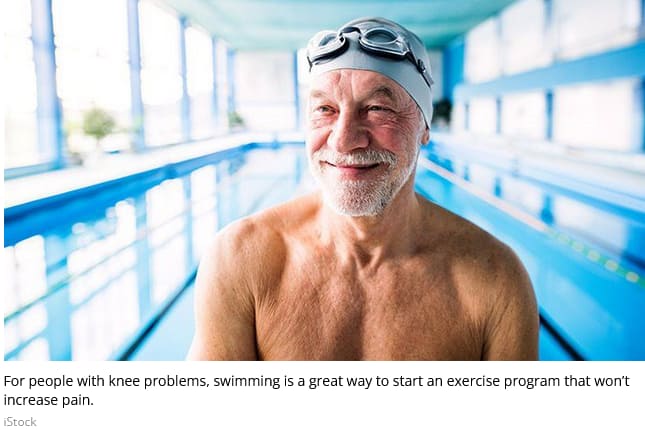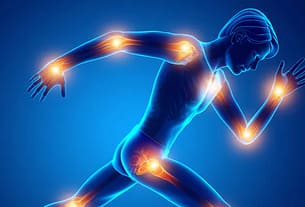Is Diet or Exercise Best for Losing Weight With Knee Osteoarthritis?
Both work well, especially together. Definitely approach weight loss with both a diet plan and a fitness plan. Combining the right diet plan with appropriate exercise, along with learning tools that change ingrained behaviors, is the best way to lose significant weight.
Losing weight slowly is best for the body- a reasonable time period is six months to drop 10 percent of your body weight.
Weight Loss Will Help You Feel Better — and Help Your Joints
The more weight you lose, the more benefits your knee osteoarthritis will get, the Arthritis Care & Research study found. While everyone in the study who lost pounds saw improvements, people who dropped 20 percent or more of their body weight got an extra 25 percent reduction in some osteoarthritis symptoms compared with people who lost from 10 to 20 percent.
How Does Weight Loss Help Improve Knee Osteoarthritis Symptoms?
Exactly why this happens wasn’t studied, but exercise in general helps lubricate your joints and generate more beneficial nutrients and synovial fluid to protect them, notes the Arthritis Foundation. Plus, building up the muscles around the knee takes some pressure off the joints, says Genie Lieberman, director of the Gloria Drummond Physical Rehabilitation Institute at the Boca Raton Regional Hospital in Florida.
“People with knee osteoarthritis feel better when they lose their excess weight. It takes less effort to be active in the day — to walk, lift yourself out of the chair, and the like,” Lieberman says.
What’s more, weight loss also leads to decreased blood pressure, fewer unhealthy blood fats, more good cholesterol, and better balance for blood sugar levels, among other improvements for common problems.
Here are six ways to help you succeed as you proceed with your weight loss efforts:
1. Get a Prescription for Physical Therapy to Help Lose Weight With Knee Osteoarthritis
If you haven’t exercised in a long time, if you have other serious conditions like heart disease, or if moving your joints brings severe pain — or even just the fear of pain — ask your doctor to refer you to a physical therapist. These specialists can ease you slowly into appropriate movements.
“It can help people to have a structured program in the beginning, so they can feel more confident that they won’t overdo it,” Lieberman says.
Without a physical therapist, for example, you might not realize that exercising your legs with weights, like with the machines you find in a gym, is not good for knee osteoarthritis. “It’s fine to do straight leg raises in a chair, which strengthen the quads above the knees. But it can injure the joint to push the leg against resistance,” she says.
2. Start Working Out in the Water to Help Lose Weight With Knee Osteoarthritis
Whether you work with a therapist or on your own, the best way to begin an exercise program that you’ll stick with is to move without pain. For people with knee osteoarthritis, “that means swimming, swimming, swimming,” Lieberman says.
Moving in water — which includes pool aerobics or swimming laps — allows the joint to flex with no gravity or weight against it.
After you’ve built confidence and a bit of muscular heft, you can go on to other workouts, such as fast walking outside or on a treadmill, or using an elliptical at a moderate speed.
3. Pack Each Breakfast With Protein to Help Lose Weight With Knee Osteoarthritis
Americans are good at eating enough protein and fiber for lunch and dinner: a salad with grilled chicken, a turkey sandwich with a side of slaw, meatloaf with veggies.
But breakfast is where many fall short, says Lauren Harris-Pincus, RDN, a registered dietitian nutritionist in Green Brook, New Jersey. Bagels, croissants — even healthier oatmeal — have nowhere near the 20 to 35 grams of protein per meal that are recommended and that keep us feeling full, she says.
Harris-Pincus, author of The Protein-Packed Breakfast Club, says pairing protein with fiber makes for the best meals, especially when you are trying to lose weight.
Her go-to: overnight oats, which she makes by filling a jar with oats, plain Greek yogurt (or nut or cow’s milk), a tablespoon of flavored protein powder, chia seeds, and fruit, then letting it soak overnight in the fridge. By switching up the fruits and the flavor of the powder (one day it’s pear-coconut, another banana-vanilla), she gets variety in her daily oatmeal.
4. Confront the Emotions Behind Overeating to Help Lose Weight With Knee Osteoarthritis
Dietitians used to focus on giving clients information, such as advising them on which eating plans were best. Now many spend as much time helping clients understand the emotions they bring to food, which is crucial for successful weight loss.
“People eat because they’re happy, stressed, bored, angry, or in pain, not always because they’re hungry,” Harris-Pincus says. “We work to understand what motivates them to eat, which is very individualized.”
Of course, an appropriate eating plan is also important. “Any diet you can’t do long-term is not worth doing,” she says.
5. Keep Your Eye on the Prize to Help Lose Weight With Knee Osteoarthritis
Losing weight is a marathon. And like any marathon, you need to stay motivated when you can’t yet see the finish line. As with any project that takes a while, there will be highs and lows.
A good way to get through the troughs is to remind yourself of what you’re hoping to accomplish, including less knee pain, Lieberman says.
Lieberman likens weight loss to redecorating your home. “When you redecorate, you’re going to have covered furniture that you can’t sit on, the mess of painting your walls, and other discomfort and aggravations,” she says. But you go through it because eventually you’ll have a beautiful home. And if you stick with your diet and exercise plans, you’ll have your desired body weight.
6. Find a Buddy to Help Lose Weight With Knee Osteoarthritis
Even when people with knee osteoarthritis know that healthy lifestyle habits will help them, it can be hard to stay on track. Research published in The Journal of Rheumatology found that joining forces with people who share similar challenges is a good way to motivate yourself to change bad habits.
Find a friend with knee osteoarthritis to exercise with, or if you don’t know anyone, ask around at events sponsored by your local Arthritis Foundation chapter to see if someone wants to pair up with you, Lieberman suggests.





